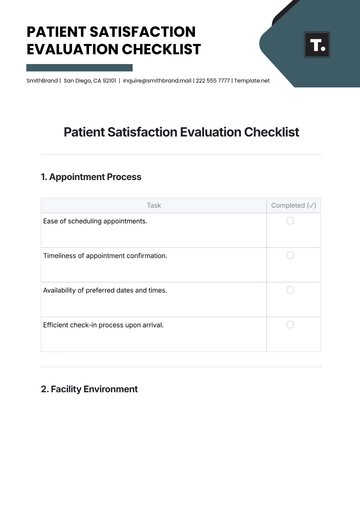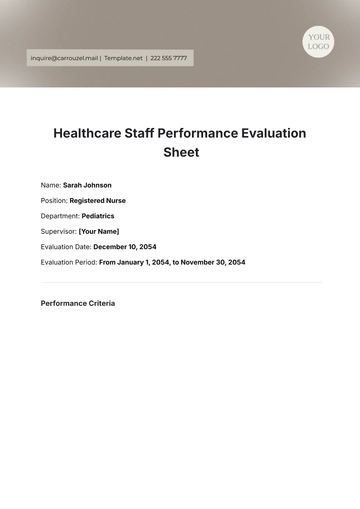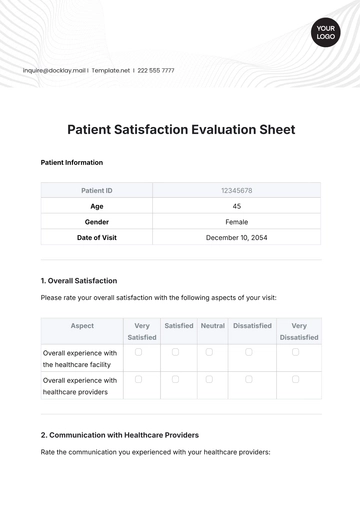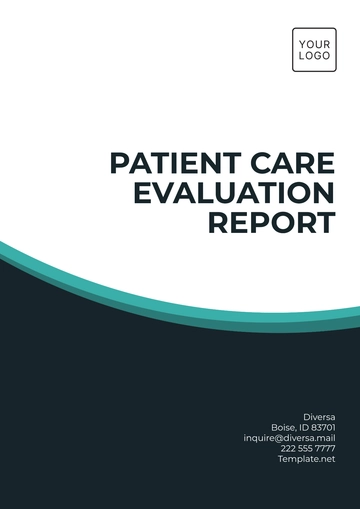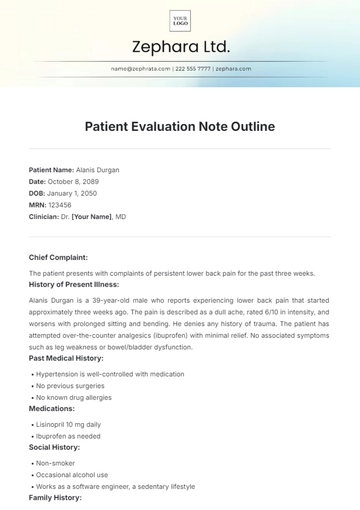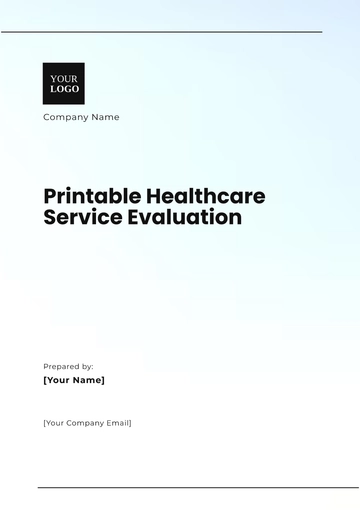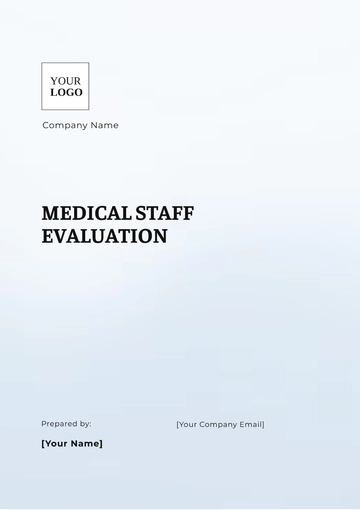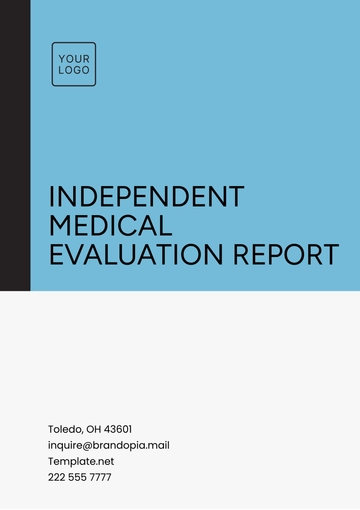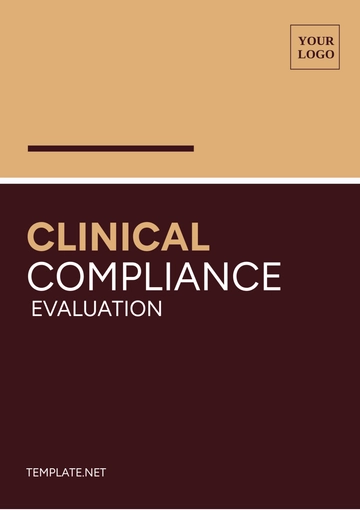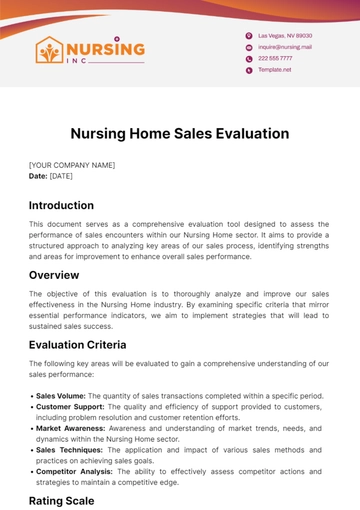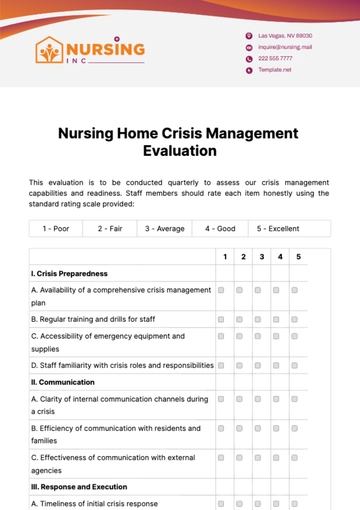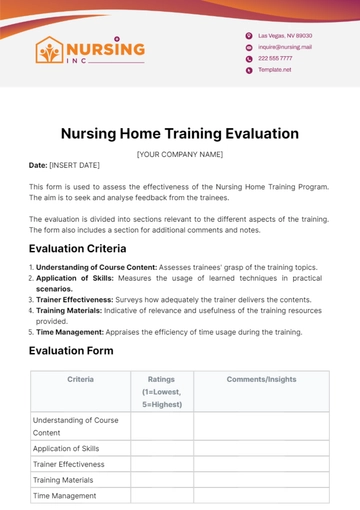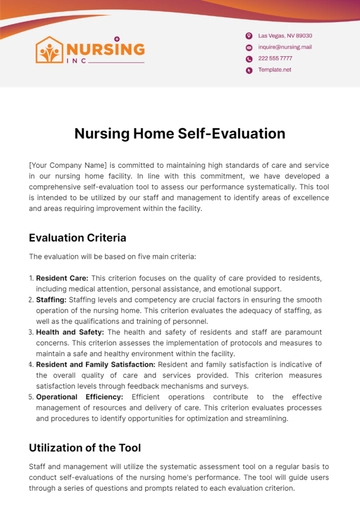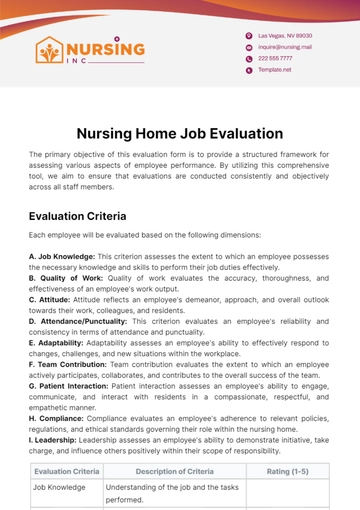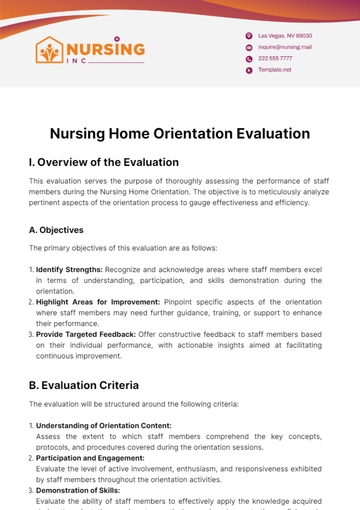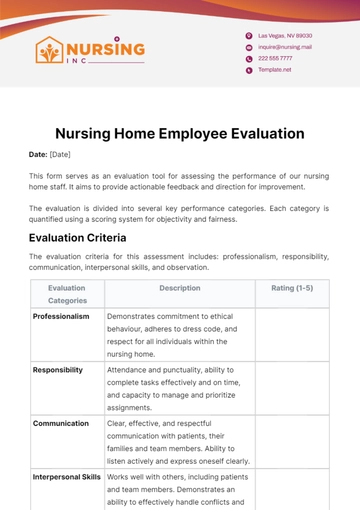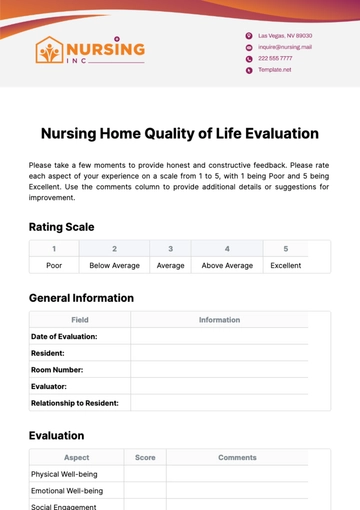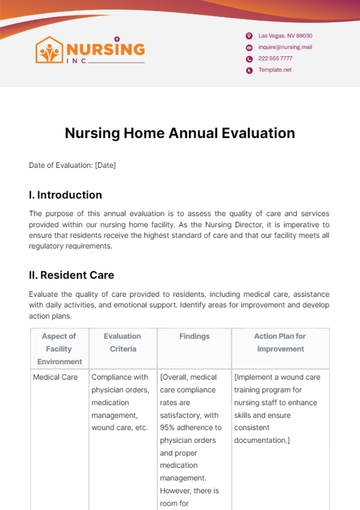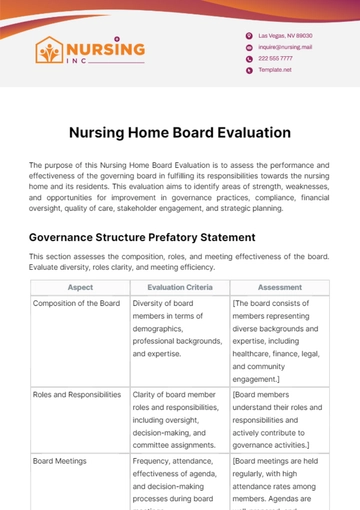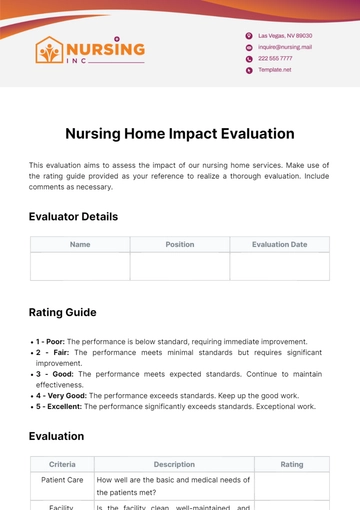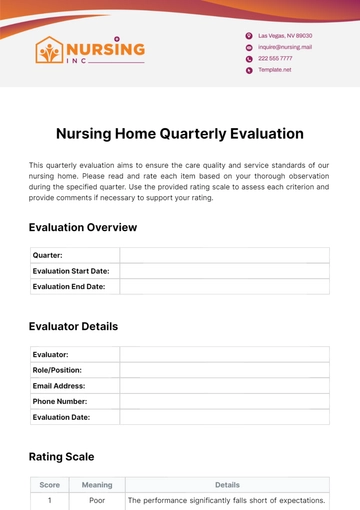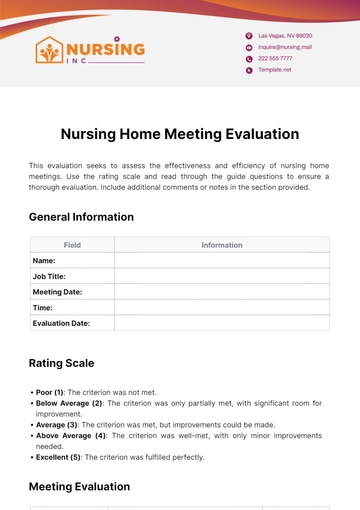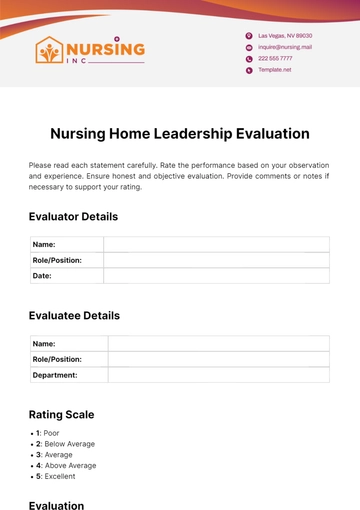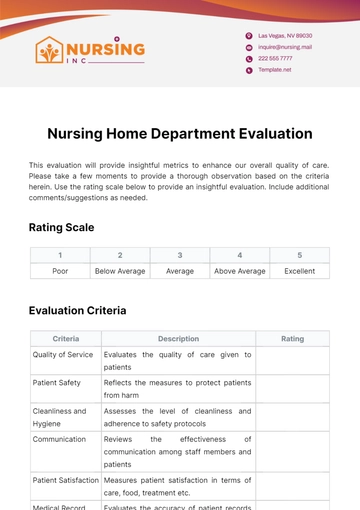Free Nursing Home Annual Evaluation

Date of Evaluation: [Date]
I. Introduction
The purpose of this annual evaluation is to assess the quality of care and services provided within our nursing home facility. As the Nursing Director, it is imperative to ensure that residents receive the highest standard of care and that our facility meets all regulatory requirements.
II. Resident Care
Evaluate the quality of care provided to residents, including medical care, assistance with daily activities, and emotional support. Identify areas for improvement and develop action plans.
Aspect of Facility Environment | Evaluation Criteria | Findings | Action Plan for Improvement |
|---|---|---|---|
Medical Care | Compliance with physician orders, medication management, wound care, etc. | [Overall, medical care compliance rates are satisfactory, with 95% adherence to physician orders and proper medication management. However, there is room for improvement in wound care documentation and follow-up.] | [Implement a wound care training program for nursing staff to enhance skills and ensure consistent documentation.] |
Activities of Daily Living (ADLs) | Assistance with bathing, dressing, eating, mobility, etc. | ||
Emotional Support | Psychosocial support, resident engagement, mental health services |
III. Facility Environment
Assess the safety, cleanliness, and accessibility of the facility. Review emergency preparedness, infection control measures, and compliance with ADA standards. Propose enhancements for a conducive environment.
Aspect of Facility Environment | Evaluation Criteria | Findings | Action Plan for Improvement |
|---|---|---|---|
Safety | Emergency preparedness, fall prevention, infection control | [Safety measures are robust, with regular emergency drills and infection control protocols in place. However, fall prevention strategies need reinforcement, with a slight increase in fall incidents over the past year.] | [Conduct additional staff training on fall prevention techniques and review environmental factors contributing to falls.] |
Cleanliness | Hygiene standards, sanitation practices | ||
Accessibility | ADA compliance, wheelchair accessibility, signage |
IV. Staffing Levels and Training
Examine staffing ratios, availability of certified nursing assistants (CNAs), and staff training programs. Address any staffing deficiencies and identify opportunities for training enhancement.
Aspect of Staffing and Training | Evaluation Criteria | Findings | Action Plan for Improvement |
|---|---|---|---|
Staffing Ratios | Nurse-to-resident ratios, availability of certified nursing assistants (CNAs) | [Staffing ratios meet regulatory requirements, but there is occasional understaffing during peak hours.] | [Implement a flexible staffing model to adjust staffing levels based on resident acuity and activity levels.] |
Staff Training | Compliance with training requirements, ongoing education programs |
V. Compliance with Regulations
Ensure compliance with state health department regulations and CMS guidelines. Identify any violations or areas of non-compliance and propose corrective actions.
Aspect of Regulatory Compliance | Evaluation Criteria | Findings | Action Plan for Improvement |
|---|---|---|---|
State Regulations | Compliance with state health department regulations | [The facility is in full compliance with state health department regulations, with no major violations identified during inspections.] | [Continue to monitor changes in state regulations and update policies and procedures accordingly to maintain compliance.] |
CMS Guidelines | Compliance with Centers for Medicare and Medicaid Services (CMS) guidelines |
VI. Resident Rights
Evaluate the protection of residents' rights, including privacy, dignity, and informed consent. Address any breaches and reinforce staff training on resident rights.
Aspect of Resident Rights | Evaluation Criteria | Findings | Action Plan for Improvement |
|---|---|---|---|
Privacy and Dignity | Respect for resident privacy, dignity, and autonomy | [Resident privacy and dignity are respected, with policies in place to protect resident rights.] | [Reinforce staff training on resident rights and autonomy to ensure consistent adherence to policies and procedures.] |
Informed Consent | Resident involvement in care decisions, consent procedures |
VII. Quality Improvement
Identify areas for improvement based on evaluation findings. Develop strategies for enhancing quality of care and services, focusing on continuous improvement and resident satisfaction.
Identified Areas for Improvement:
Wound care documentation and follow-up
Fall prevention strategies
Availability of mental health services
Staff training in dementia care and communication skills
Strategies for Quality Improvement:
Implement wound care training program
Conduct additional staff training on fall prevention techniques
Develop on-site counseling services for residents
Offer specialized training modules focusing on dementia care and communication techniques
VIII. Conclusion
Overall, this annual evaluation highlights the strengths of our nursing home facility while identifying areas for improvement. By implementing targeted action plans and continuously monitoring our progress, we are committed to providing the highest quality of care and ensuring the well-being of our residents.
- 100% Customizable, free editor
- Access 1 Million+ Templates, photo’s & graphics
- Download or share as a template
- Click and replace photos, graphics, text, backgrounds
- Resize, crop, AI write & more
- Access advanced editor
Discover the ultimate solution for assessing nursing home quality with the Nursing Home Annual Evaluation Template from Template.net. This editable and customizable template, equipped with an AI Editor Tool, streamlines evaluation processes. Crafted for efficiency, it ensures regulatory compliance and facilitates quality improvement initiatives. Elevate your annual assessments effortlessly with this comprehensive template.
